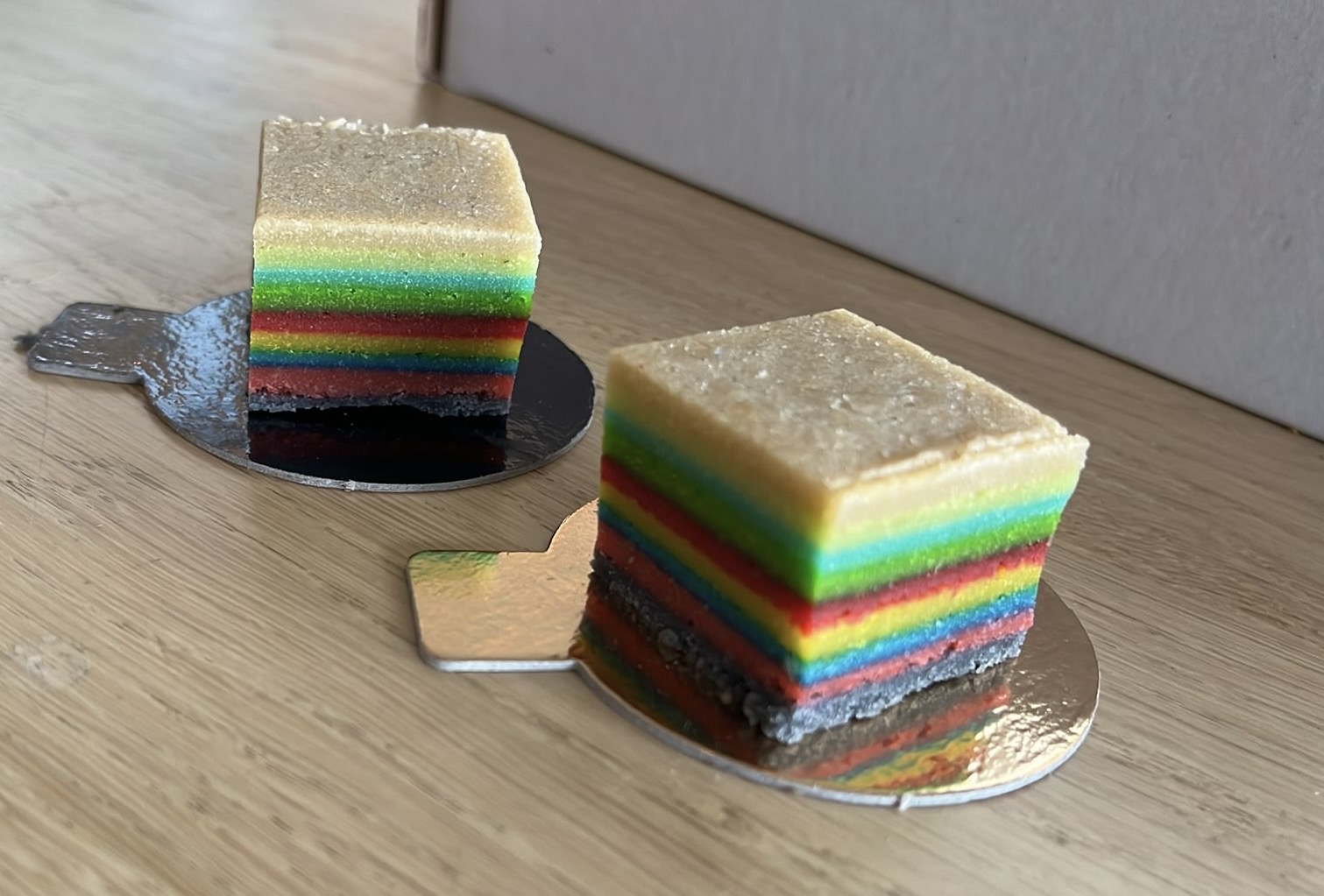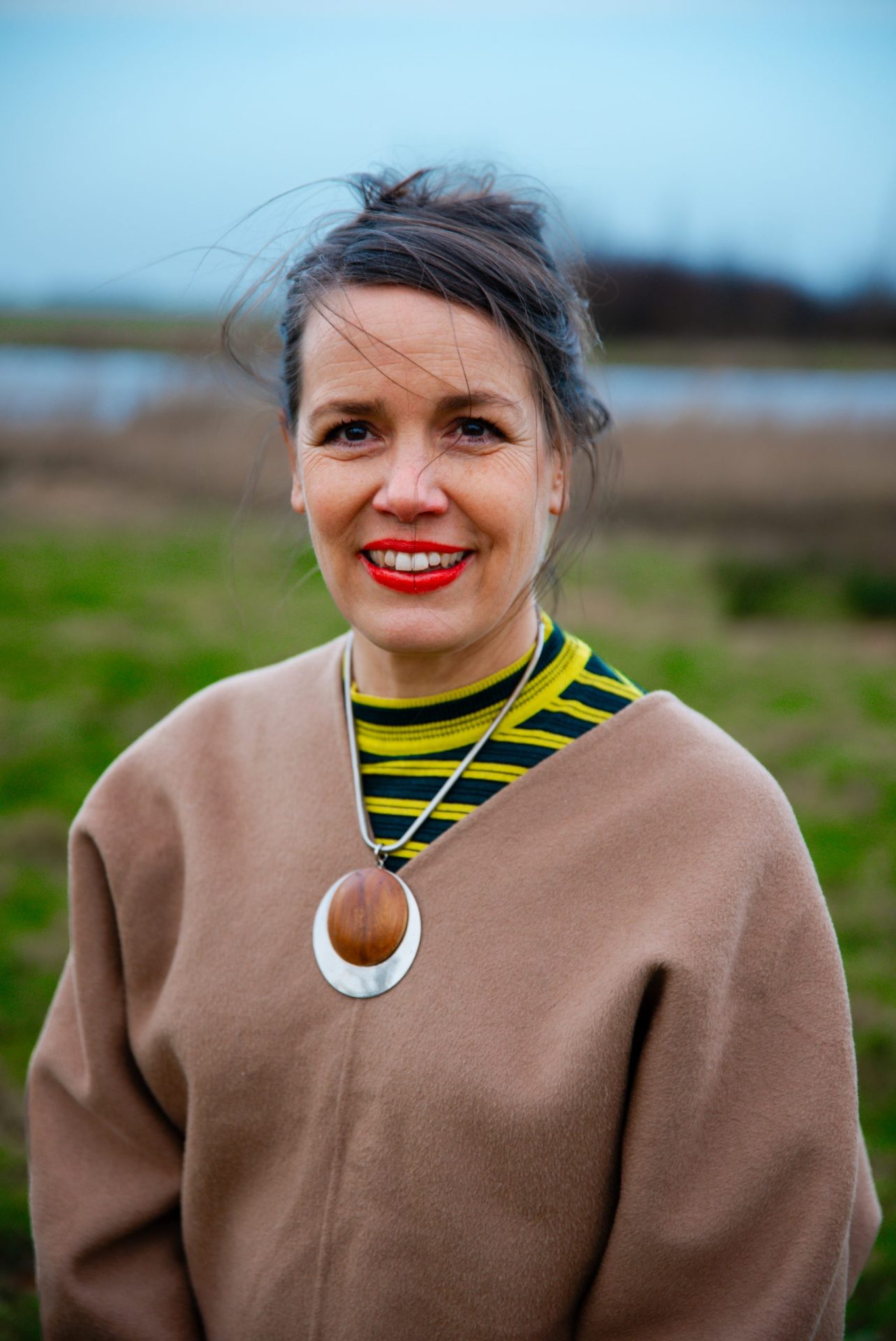Eva Pfannes of OOZE Architects: “Peat is a superhero.”
Water systems aren’t usually seen as exciting. Think of a sewage pipe or a water treatment plant tucked away on the edge of an industrial zone. Because they are so hidden — or even unattractive — we tend not to give them much thought, says Eva Pfannes of OOZE architects & urbanists.
Through her practice, she’s working to change that. Together with her partner Sylvain Hartenberg and colleagues Hsoc Mathai George and Takuma Johnson, Eva created a beautifully designed water purification system right on a schoolyard in Chennai, India. It looks more like a water park than an industrial installation. “Instead of hiding the challenge of water treatment, we want to spark people’s curiosity,” she says. And it works — the media covered it, the local community took pride in it, and more schools across India are now eager to join. In the Frisian peat meadow region, OOZE is applying this proven strategy to the urgent questions of the future.

systems thinking with a local application
OOZE’s strategy combines systemic thinking with grounded, place-based design. “We connect fields like climate mitigation and adaptation, the energy transition, and new models for shared ownership and stewardship,” says Eva. “But we also apply these ideas locally and speculatively, through demonstration projects.”
Their approach draws on nature-based solutions, such as filtering water through helophyte systems — natural filters made of wetland plants that clean water as it flows through.
Over the past 15 years, OOZE has developed and tested this method in urban water projects across India and Brazil. And while the peat meadow region in Fryslân isn’t urban, Eva sees a direct link to the city: “This is where food is produced that ends up being eaten in cities. The countryside and the city are deeply connected.”
peat as a superhero
There are more connections between their work in Chennai and the Frisian peatlands than you might expect. Both places face water shortages and pollution. In India, the challenge is to capture rainwater, purify it, and prevent flooding. In Fryslân, the impact of the climate crisis over the past five years has shifted the challenge: now there’s sometimes too little water, and pollution from nitrogen has become a major issue. To imagine what systemic change could look like, OOZE first explored the original character of the Frisian peatland — to understand the landscape and its scale.
“This region was once an enormous marsh,” says Eva. “A landscape where carbon capture and water purification were deeply embedded in natural systems.” Peatlands are still among the most effective carbon sinks on earth: they store twice as much carbon as all the world’s forests, while covering only one-tenth of the land area.
“Peat is a superhero,” says Eva. “But at the current rate of drying, we’re losing one centimetre of soil per year. That’s why it’s urgent to strengthen the soil’s capacity to retain moisture, keep carbon in the ground, and prevent it from reacting with oxygen — turning into CO₂ and escaping into the atmosphere.”

nine transition tasks
There are nine major transition challenges in the Frisian peat meadow region: peat (CO₂ reduction and soil subsidence), water management, pollution (particularly nitrogen), biodiversity, energy transition, a new circular economy, heritage, housing, and foundation problems. OOZE visualised this stack of crises as a “polycrisis pancake” — a layered, pressing reality demanding holistic responses.
thinking in decades
To give truly sustainable systems a real chance, we need to shift our time horizon, says Eva. “Government policies tend to look five or ten years ahead. Politicians often think only as far as their own term. For example, compensation schemes for farmers might cover the next ten years — but farmers think in generations. They plan 30 or even 40 years ahead.”
This, she explains, is where politics and sustainable thinking can collide. “There are more hurdles, of course — like our economy’s dependency on growth, and our ties to global markets.” In the midst of this complexity, OOZE poses the question: how can we spark change — and what role can creativity and design play?
working with the province
OOZE’s systemic approach fits seamlessly with the collective spirit of the Veenweide Atelier. The firm has a strong track record of initiating inspiring pilot and demonstration projects that drive broader change and make transitions tangible. In Fryslân, OOZE joins forces with ongoing provincial pilots in the Hegewarren polder and Aldeboarn De Deelen.
These initiatives explore new ways of generating income: capturing carbon, cultivating wetland crops, developing a sustainable wetland crop chain, and revaluing the landscape’s beauty through eco-tourism and housing concepts. “We contribute to the design of these pilots and explore what lessons we can draw for the future of this region,” says Eva.
beyond the pilot
Still, the pilots are just a beginning. “What excites us is being part of something bigger — helping to shape the long-term future of the peat landscape,” says Eva. OOZE hopes to remain involved in the region for years to come. They don’t offer fixed solutions or guaranteed outcomes.
“There is always a level of uncertainty,” Eva explains. “How much will sea levels rise? How many storms lie ahead? But what you can do is choose working methods that are rooted in care, resilience and regeneration — methods that help build a new model for how we live.”

